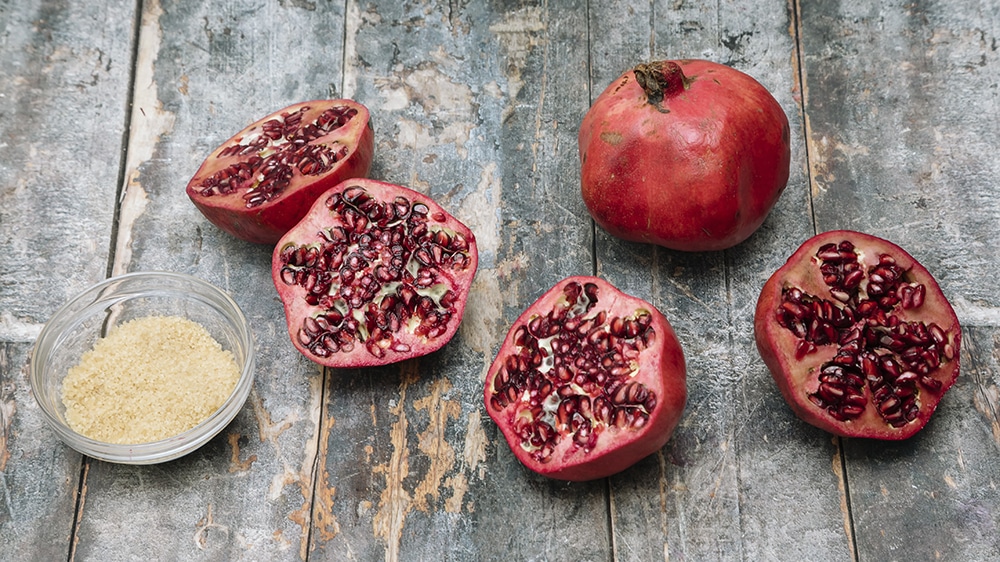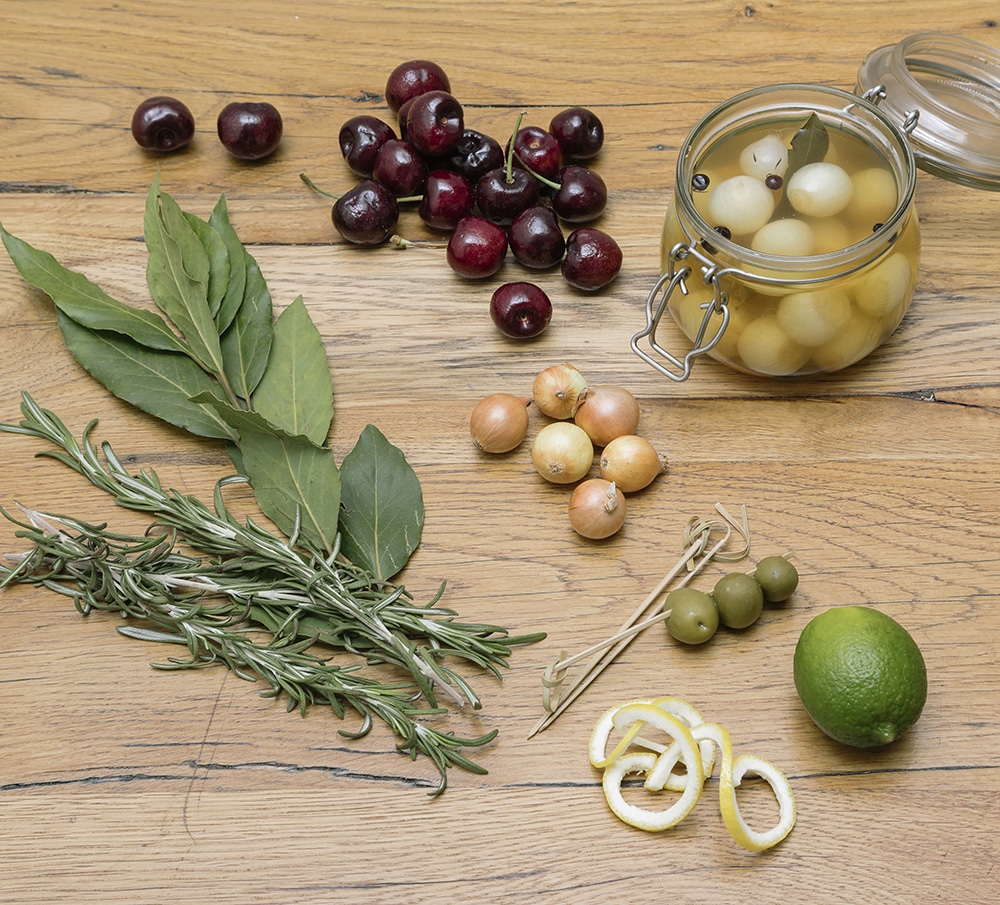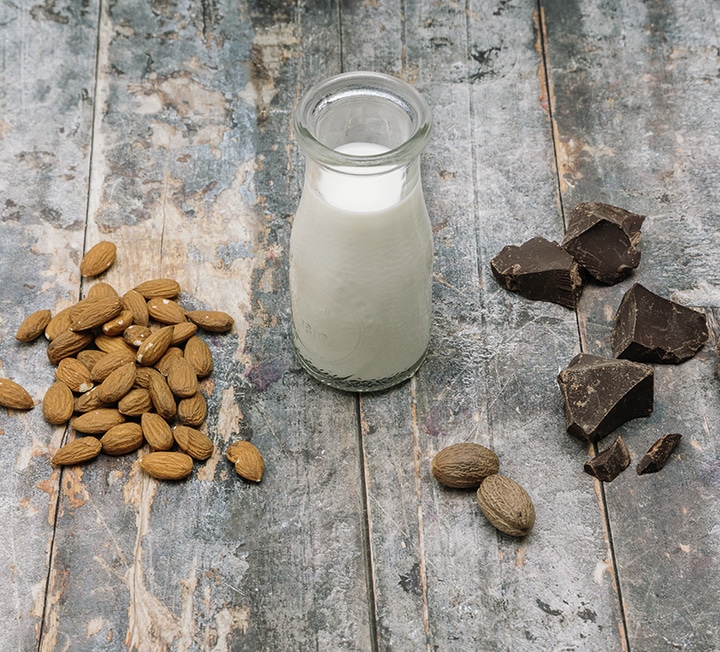Lateral drinking: cordials & sherbets
Food writer and Cookbook Club host Angela Clutton shares her tips on making creative drinks with Market produce. This time: cordials and sherbets


“LOTS OF FRUITS ARE UP FOR BEING CORDIAL-ED AND THEN ENJOYED AS A LONG, COOL DRINK WITH SPARKLING WATER”
Image: Orlando Gili
As pomegranate season ebbs towards its end, I am buying up as many as is reasonable (maybe even a few more that) and employing an age-old way of preserving produce to ensure I can enjoy pomegranates’ brightness of colour and flavour right through the year: making them into grenadine cordial.
This grenadine is, like all cordials, a simple concentrate of fruit juice and sugar. My recipe is a happy world away from commercial grenadines, which often have too little to do with pomegranates at all and are manufactured just to be pink and sweet; flavour lags far behind or is even ignored. For me, that really sums up what is so wonderful about making your own fruit cordials: knowing absolutely what has (or, often more pertinently, hasn’t) gone into them.
Lots of fruits are up for being cordial-ed and then enjoyed as a long, cool drink with sparkling water, as a hot drink, dashed into a G&T, or mixed in a cocktail. There’s rhubarb, which creates a cordial even more fabulously bubble-gum pink than grenadine if you use the forced rhubarb that is around at the Market at the moment. Plums, too, can be prolonged as a deep-hued and highly flavoured cordial. As we head into spring and summer, there will also be the glory of elderflower cordial, followed by peach, apricot, cherry, and all the juicy berries that are so famously good as cordials.
When making any of these, it pays to have a think about what other flavour notes might work alongside. I like to add a few crushed juniper berries to blackberries as they are cooked down with sugar. Other cordials are better suited to crushed coriander seeds, cardamom, orange zest, bay or lavender. There are so many options to get creative with, if you use your knowledge of flavour combinations in cooking, or else pick up a gin bottle and take a cue from the botanicals listed there.
My grenadine recipe has a little salt for balance, and rosewater. Here it begins to cross into being a sherbet – not the liquorice-sweet dip of childhood, but the sherbets of Middle Eastern heritage, which were the precursor to western cordials and made with fruit juices and sugar, then additionally flavoured with flowers or herbs. The root of the word ‘sherbet’ lies in the arabic ‘shariba’ meaning ‘to drink’, which shows just how ubiquitous sherbets were. And you can see why, given how supremely refreshing they are.
Many sherbets were and are made with a citrus juice base – which makes me wonder, are they also an ‘ade’? Lemonade, limeade and orangeade, when made from scratch, are after all, usually simply sweet cordial / sherbet that is then diluted into a drink.
For my lemonade, I tend to go for a floral honey such as lavender as the sweetener. It gives it such a lovely deep, underlying note. That’s one of the things I love with all of these drinks – making your own gives the choice of not just the central flavour, but also how much and what they are sweetened by. Increasingly for me that’s honey rather than sugar, the type and flavour of honey used is chosen for its role in the final character of the drink.
Maybe it doesn’t matter after all whether you call these drinks a cordial, sherbet, or -ade. What really matters is yours will be exactly as sweet, zesty, spicy, or intensely fruity as you like it – perfect for keeping on stand-by in the fridge or even freezing, so you can enjoy the flavours of deliciously seasonal fruits throughout the year.
See Angela’s recipe for grenadine.


